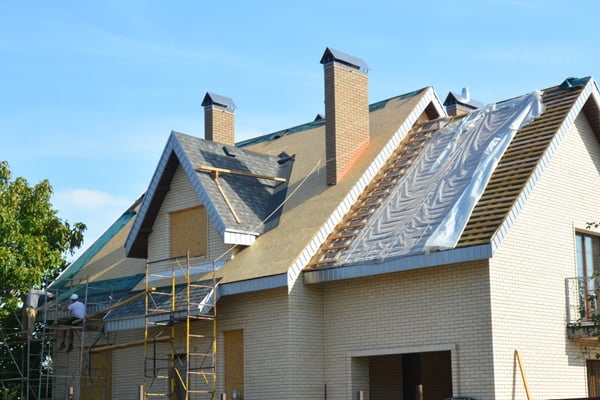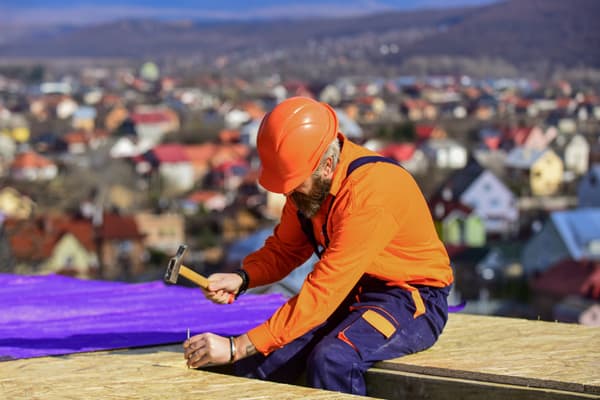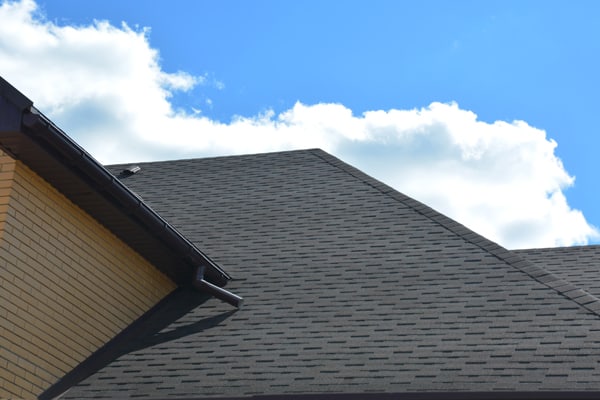Waterproofing Your Roof
Although we’d like to think our roof is indestructible and invincible against the outer elements, it’s not—or at least, not without a little hard work on our end. No matter where you live in the United States, you’re subject to a variety of adverse weather conditions, so it’s smart to question your roof’s waterproofing capabilities and what you can do before laying any shingles.
Roofing Underlayment Options & Its Finer Details
Roofing underlayment is essential to the waterproofing element of your roof, but what is it exactly? It’s a water-resistant barrier—a material that’s installed over your roof deck. The underlayment is just as its name suggests, fitting beneath the entire roofing system to combat water infiltration and severe weather.

Roofing underlayment is available in three popular types:
- Underlayment comprised of rubberized asphalt
- Non-bitumen synthetic underlayment, also called synthetic underlayment
- Asphalt-saturated felt underlayment
Before synthetic roofing materials revolutionized the industry, asphalt-saturated felt was the underlayment of choice. Roofers dub this underlayment as “tar paper” or “felt paper” because it’s comprised of natural plant fibers in addition to polyester or asphalt. This felt paper fits across the entirety of the roof deck, and some roofers insist on applying it if you live in a climate that experiences wet weather.
When non-bitumen synthetic underlayment was introduced as a synthetic roofing material to the market about a decade-and-a-half ago, it surpassed tar paper in popularity. Now, it’s the premier choice of waterproofing underlayment thanks to slip-resistance, durability, tear-resistance, and stability.
Roofing systems offer a more expensive option for regions that experience heavy winters: rubberized asphalt. This type of underlayment is packed with asphalt and rubber polymers. It has an adhesive back that allows for a tight, waterproof seal, even protecting the edge of the roof deck. When synthetic underlayment isn’t enough to combat thick layers of snow, there’s rubberized asphalt.

Why Underlayment Is Essential
Your roofing system is engineered to combat the outer elements and to provide a trustworthy shelter for decades. It’s a system that relies on each layer of itself to repel water and moisture, sun and UV radiation, storms and strong winds, and all parts are necessary to ensure its longevity. Skip one part of the system and the rest is weaker without it.
Here are the advantages in having a roofing underlayment installed on your roof deck:
- Water-resistant barrier
- Moisture protective when shingles are vulnerable
- Protective against ice damming and high winds
- Prevents costly repairs
In some areas of the United States, water-resistant underlayment is not only a recommendation, but a necessity. Roofing contractors will insist upon installing an underlayment if the region is prone to heavy rain, cold, snowy winters, or other concerning weather factors that could deteriorate the roof.
If you’re thinking that the shingles will do all of the heavy lifting when it comes to protecting your roof, think again. Shingles, while durable and strong, aren’t the only layer needed to keep your roofing system in check. Shingles that aren’t sealed at all of the corners tend to be ripped off the roof in the face of a strong wind. They become brittle as they age, and you’ll find that pieces will break when exposed to temperature swings or long bouts of UV radiation. An unventilated attic can also wreak havoc on the integrity of your shingles, causing a much shorter lifespan for them than originally designed.
An underlayment fills the gaps of protection because shingles are only the first layer of defense against the outer elements. Where shingles aren’t sealed, moisture can leak, but with an underlayment present the moisture is a non-issue, being repelled off of the roofing system without fear of damage. When shingles fail because of age, brittleness, damage from a storm, or when they’re missing or cracked, the underlayment is still there to battle moisture and prevent costly repairs caused by water damage.

When Waterproofing Is Best
Waterproofing your roof is easiest and most effective when it’s done before the shingles are laid. You can apply a waterproofing compound to shingles after the fact, which is typically an oil- or water-based compound, but it won’t do you much good if there’s no underlayment beneath the shingles to act as a moisture-repellent barrier. Waterproofing compounds help restore the original oils and resins in the shingles, both of which originally made your shingles water-resistant when they were brand new.
The underlayment is the black paper placed over the plywood sheeting. It makes a seal to catch and wick water away because the shingles that are installed overtop leave parts of the roofing system exposed. This waterproof underlayment can have additional layers applied to it like a membrane, a sweat sheet, or vapor barrier for homeowners looking for extra protection in climates prone to aggressive weather.
Always Go with Professionals for Roof Replacement and Repair
Whenever you’re making improvements to your home, you always want to go with professionals. This is essential to quality, safety and security. But as a customer, don’t be afraid to speak up and trust your gut. Enjoy your home for years to come knowing there’s a solid roof over your head.
At Feldco Roofing, we provide breakthrough design and triple layer protection to keep your roof insulated throughout the year. For a roof replacement, our installers are factory trained, experienced and professional to get the job done correctly. Speak to a product specialist and get a free quote online today.





